Water cures in the spa of Bad Camberg
- Written by Portal Editor
- Category: Hesse
- Hits: 1498
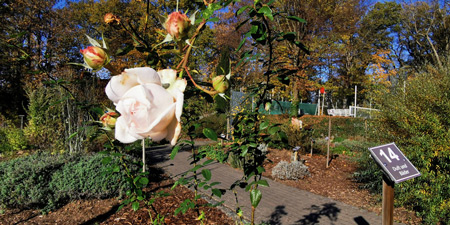
Bad Camberg is the heart of the Goldener Grund, the second largest city in the Limburg-Weilburg district and the oldest Kneipp spa in Hesse.
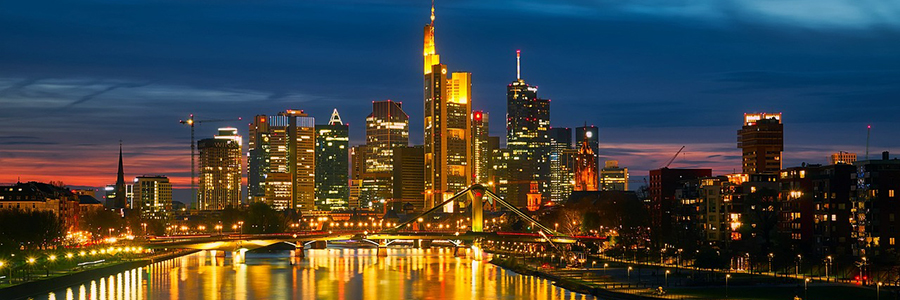 The north and east of Hesse are part of the catchment area of the Weser, their source rivers Fulda and Werra flow through Hesse over 215 km and 95 km respectively. In contrast, the rest of the country is drained towards the Rhine, which forms the border with Rhineland-Palatinate in the southwest over a length of 107 km. Its main tributaries for Hesse are Main and Lahn, but the Neckar also flows a short distance through the extreme south of Hesse.
The north and east of Hesse are part of the catchment area of the Weser, their source rivers Fulda and Werra flow through Hesse over 215 km and 95 km respectively. In contrast, the rest of the country is drained towards the Rhine, which forms the border with Rhineland-Palatinate in the southwest over a length of 107 km. Its main tributaries for Hesse are Main and Lahn, but the Neckar also flows a short distance through the extreme south of Hesse.
Frankfurt am Main Airport is by far the most important airport in Germany and one of the ten largest in the world. Not far southeast of Frankfurt Airport is the Frankfurt-Egelsbach airfield, which is frequented by smaller machines.
A network of cycle paths runs through Hesse. The nine long-distance cycle paths (R1–R9) as well as the Lahntal cycle path, the Weser cycle path and the Werratal cycle path are of national importance. There are also a number of regional routes which, like the long-distance cycle paths, are particularly important for cycle tourism, for example the Vogelsberger Südbahn cycle path or the volcano cycle path.
Hesse's only national park is the Kellerwald-Edersee National Park. Part of it has been part of the UNESCO World Heritage Site “Ancient Beech Forests and Primeval Beech Forests of the Carpathians and Other Regions of Europe” since 2011. The Messel Pit, a world-class fossil deposit, has been a World Heritage Site since 1995.
The financial centre of Frankfurt am Main is an important international financial centre. The first thing to think of is the European Central Bank and the Deutsche Bundesbank. The headquarters of the four largest German banks: Deutsche Bank, DZ Bank, the development bank KfW and Commerzbank are based in Frankfurt am Main, as well as numerous smaller banks, public and cooperative credit institutions and more than 150 branches of foreign banks

Bad Camberg is the heart of the Goldener Grund, the second largest city in the Limburg-Weilburg district and the oldest Kneipp spa in Hesse.
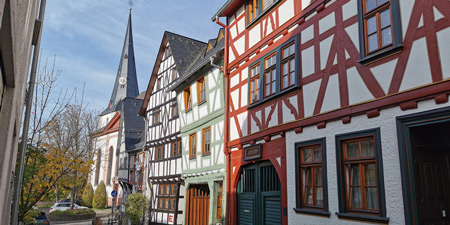
Our tour of Bad Camberg quickly showed that the place has much more to offer than water, fresh air and a beautiful landscape. The small town always surprises with many picturesque and unusual buildings.
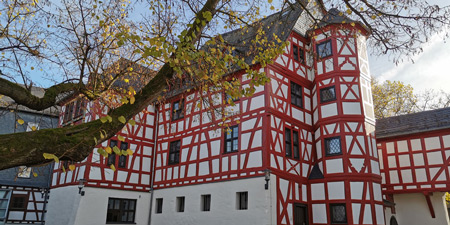
Our tour of Bad Camberg had almost come to an end, at least according to our schedule, when we came across other imposing buildings: the so-called Amthof with the town and tower museum, which unfortunately had already closed.
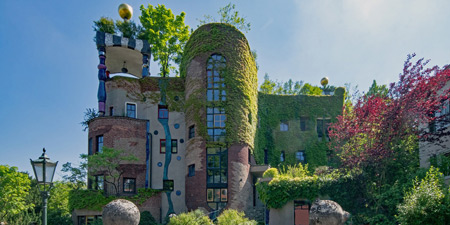
We were traveling in the Taunus and that's how we came to Bad Soden, where you can still find springs in many places, including many warm and salt springs, so that Soden has now become Bad Soden.
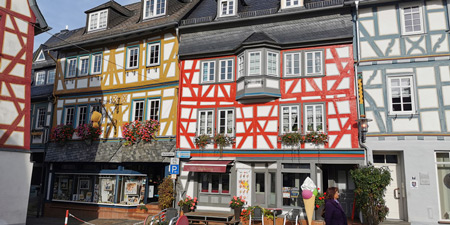
After the carnivalists had slowly "withdrawn" from the Bad Camberg market square, peace and quiet was possible again to enjoy the excellently restored half-timbered buildings in the old town.
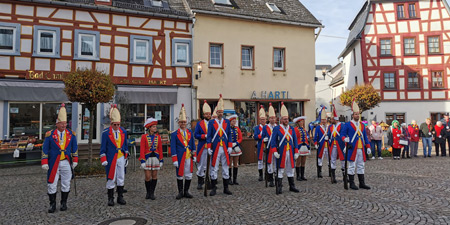
Since the 19th century, the official opening of the carnival session has taken place in many areas in addition to or separately from the start of the "normal" carnival season on Epiphany, January 6th, on November 11th, the "eleventh within the eleventh". took place, which of course we didn't have on our radar during our visit to Bad Camberg.
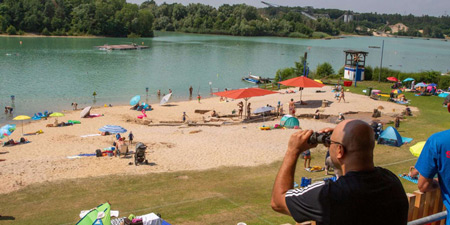
Rodgau is part of the Rhein-Main metropolitan area, one of the economically strongest areas in Germany, so it is not surprising that we were invited to a working lunch in the region.
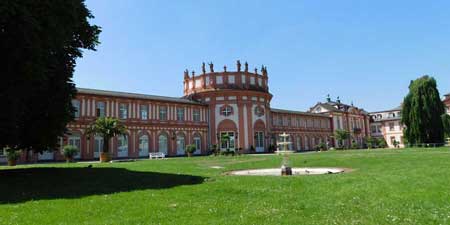
For some time now, we have had business contacts in Wiesbaden, which, due to the really well-working Internet connections, could be managed by email so far.